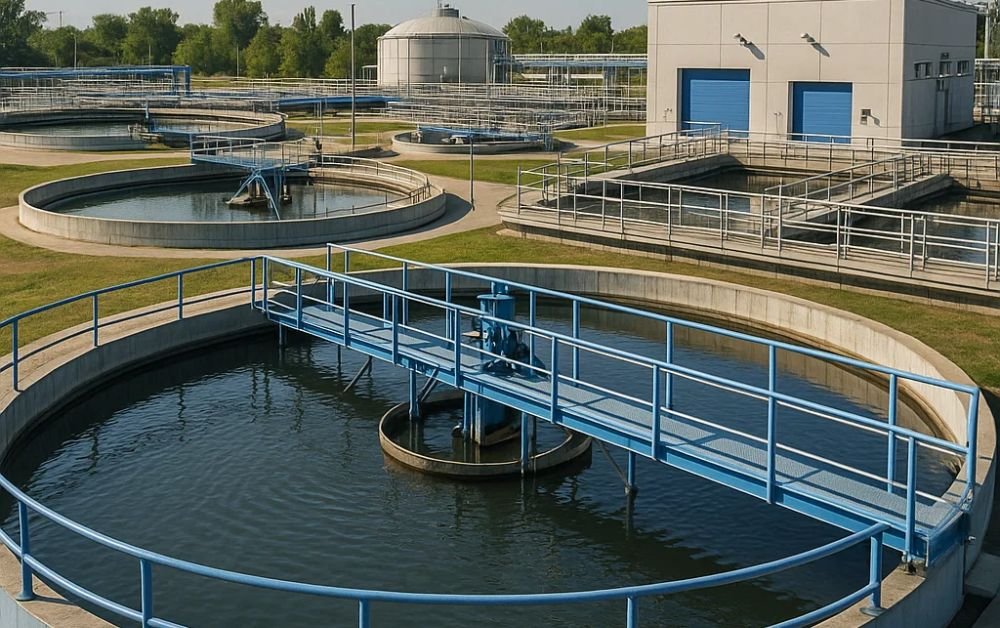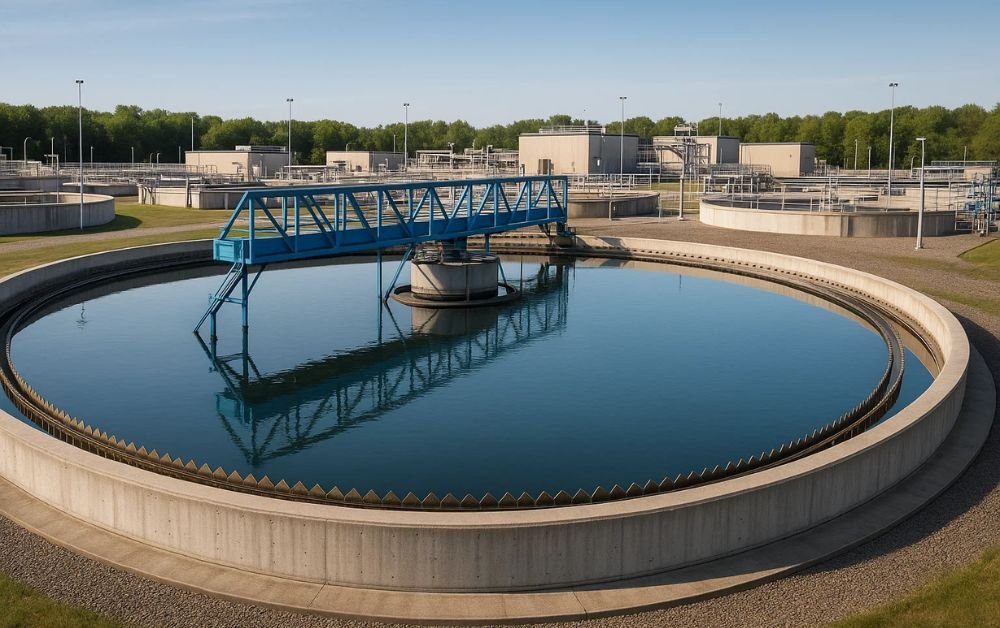Routine inspection, timely servicing, and process monitoring are essential to ensure the system performs optimally over the long term. This blog outlines actionable maintenance tips that plant operators and facility managers can adopt to improve the lifespan and performance of an SBR system.
1. Understand the Process and Design of Your SBR System
Every SBR wastewater treatment plant has unique design specifications and process configurations depending on its application—municipal, industrial, or decentralized treatment. Operators must have a clear understanding of the system’s cycle durations, aeration setup, sludge retention strategies, and effluent discharge methods.
Familiarity with the design helps in identifying potential issues early and maintaining process consistency. For example, a system treating high-ammonia wastewater may need longer aeration phases or specific adjustments to sludge age to maintain nitrification performance.
2. Regular Sludge Management
Sludge handling is a cornerstone of SBR wastewater treatment. Over time, excess sludge accumulates, and if not removed appropriately, it can compromise settling performance and lead to high suspended solids in the effluent.
Operators should:
- Regularly monitor Sludge Volume Index (SVI) and Mixed Liquor Suspended Solids (MLSS).
- Waste sludge at appropriate intervals to control sludge age.
- Avoid sudden changes in wasting volume, which can disrupt biological stability.
Proper sludge control ensures that the reactor maintains its treatment capacity and avoids issues like bulking or rising sludge.
3. Maintain Aeration Systems
The aeration phase in an SBR cycle provides the necessary oxygen for microbial activity. Whether using fine bubble diffusers or mechanical aerators, equipment health directly impacts treatment efficiency.
Key maintenance activities include:
- Checking air blowers for pressure, noise, and temperature.
- Inspecting diffuser membranes for clogging, wear, or scaling.
- Monitoring dissolved oxygen levels during the react phase.
Uneven aeration or insufficient oxygen transfer can result in poor BOD removal and unbalanced microbial communities.
4. Monitor Influent and Effluent Quality
Consistent influent monitoring helps anticipate potential issues and make timely operational adjustments. Even though SBRs can handle fluctuating loads better than some continuous systems, sudden chemical shocks or organic overloads can still affect treatment performance.
Operators should monitor:
- pH, BOD, COD, and ammonia in the influent.
- TSS, BOD, and nutrient levels in the effluent.
- Trends in influent load and seasonal variations.
Effluent quality also provides a clear indication of whether the cycle phases are operating as intended.
5. Inspect Mechanical and Electrical Components
SBR systems involve various mechanical components, such as valves, pumps, mixers, decanters, and actuators. Regular inspection of these parts helps avoid unplanned shutdowns.
Maintenance best practices include:
- Lubricating moving parts as per manufacturer recommendations.
- Checking valve actuators for alignment and responsiveness.
- Cleaning sensors and level transmitters to ensure accurate readings.
A malfunctioning decanter, for example, could draw off poor-quality water if the sludge blanket has not settled adequately.
6. Calibrate Control Systems and Automation
Modern SBR wastewater treatment systems often rely on automation to manage cycle phases, control aeration, and initiate sludge wasting. These systems need regular calibration and software updates to function effectively.
Operators should:
- Review PLC logic and timers monthly.
- Test sensor calibration for parameters like DO, pH, and tank levels.
- Monitor alarms and troubleshoot recurring issues promptly.
Automation can enhance operational efficiency, but only if the systems are accurately tuned and responsive.
7. Record and Analyze Operational Data
A strong data logging and analysis routine can help predict failures, optimize cycle parameters, and justify decisions to stakeholders.
Important data to track includes:
- Cycle times and phase durations.
- MLSS, SVI, DO levels, and nutrient concentrations.
- Equipment runtime and energy consumption.
Regular review of historical data allows for trend analysis, performance optimization, and early detection of process inefficiencies.
8. Staff Training and Awareness
Maintenance success depends significantly on the operators managing the system. Investing in regular training ensures that staff are familiar with not just routine procedures but also troubleshooting, emergency response, and system optimization techniques.
Key training areas should include:
- Safe equipment handling and lockout/tagout procedures.
- Process biology and the impact of environmental changes.
- Emergency protocols for chemical spills or equipment failure.
An informed workforce is less likely to make operational errors and more likely to contribute to consistent plant performance.
9. Implement a Preventive Maintenance Schedule
Reactive maintenance often leads to higher costs and longer downtimes. A structured preventive maintenance schedule reduces the likelihood of failures and extends equipment life.
Examples of preventive tasks:
- Daily: Visual inspections, DO monitoring.
- Weekly: Sludge level checks, valve and pump tests.
- Monthly: Sensor calibration, decanter inspections.
- Annually: Blower servicing, electrical system checks, tank coating inspections.
Having a documented checklist helps maintain accountability and ensures critical tasks aren’t missed.
Conclusion: Why Choose Blackwood Hodge Power Services Ltd?
The long-term success of any SBR wastewater treatment system doesn’t depend solely on its design—it hinges on reliable, ongoing maintenance. For plant owners and operators seeking expert support in Uganda and the surrounding region, Blackwood Hodge Power Services Ltd is a name you can trust. With a deep understanding of SBR systems and an unwavering commitment to quality service, Blackwood Hodge Power Services Ltd offers tailored maintenance solutions, rapid response support, and a track record of helping clients meet regulatory standards consistently. Their technical expertise, combined with industry-leading customer service, makes them the go-to partner for sustaining peak SBR performance for years to come.


